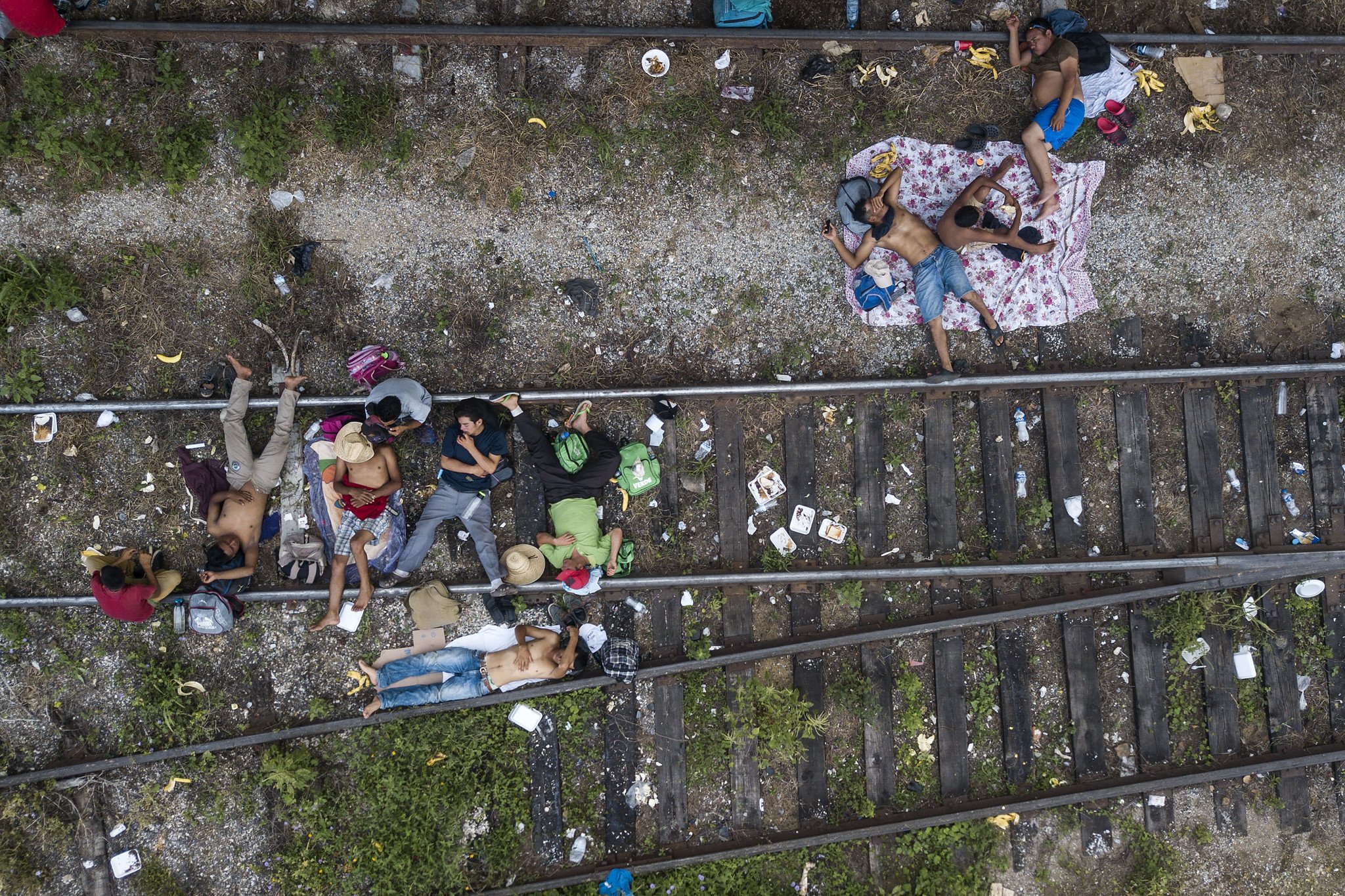Refugee Crisis
Al Norte
A casualty of the Salvadoran Civil War is carried back to his farm for burial (1982). Photo by Gary Mark Smith, Public Domain.
The Civil War had a devastating impact on the people of El Salvador. Randomized bombings often destroyed entire villages while “death squads”—escuadrones de la muerte, far-right paramilitary groups tacitly supported by the government—terrorized peasants suspected of supporting the rebels or those who were a perceived threat to the government such priests, nuns, labor leaders, students, and human rights activists. Extrajudicial killings, torture, and forced disappearances kept Salvadorans under the constant fear of violence. Many also suffered from malnutrition and lack of access to basic healthcare and education during the war. Coffee Country protagonist Jorge Argueta was just one of over 1 million citizens who migrated or fled from El Salvador during the Civil War: an estimated 25% of the population.
Many of the poorest Salvadorans were unable to leave the country, and became Internally Displaced People. Other Salvadorans fled to neighboring Guatemala and Honduras, or onwards to Mexico. The largest number traveled further North, to the United States. Some – especially middle-class families with resources or relatives already in the US – planned their journeys in advance and arrived through legal channels. Others – an estimated half a million people by 1983 – crossed the border without any visa or legal papers, hoping to claim asylum in the United States.
Who is a Refugee?
Many El Salvadoran refugees did not leave Central America, but subsisted in local refugee camps, like this settlement, Mess Grande, Honduras. Credit: Linda Hess Miller, 1987, Creative Commons Attribution 3.0 Unported
The 1980 Refugee Act was primarily shaped as a response to Indochinese refugees. Huge numbers of Vietnamese and Cambodian were being resettled to the United States, many of whom had supported US combat operations in the region. Cubans – the main Latinx group who had sought refuge in the US in recent decades – were already guaranteed legal status once they arrived in the United States under separate laws designed to show support for Fidel Castro’s opponents.
The Salvadoran refugee crisis that erupted almost as soon as the Refugee Act was passed in 1980 was an unwelcome surprise. The Salvadorans arriving in the US were fleeing a US-supported regime: many had left-wing sympathies and some were former guerillas. To acknowledge and Salvadoran’s claims for asylum would mean recognizing that the Salvadoran government was persecuting its citizens – and was using US funds to do so. As a result, and despite lengthy documentation of human rights abuses in El Salvador, the U.S. Government insisted that the Salvadorans arriving in the US were economic migrants, and not refugees.
“A refugee... is unable or unwilling to return to their country of origin owing to a well-founded fear of being persecuted for reasons of race, religion, nationality, membership of a particular social group, or political opinion.”
The United Nations’ Convention on the Status of Refugees was agreed in 1951 in the shadow of both the horrors of World War II and the new Cold War between East and West. It set out that a refugee was someone fleeing persecution and unable or unwilling to return to their own country. However although Eleanor Roosevelt played a key part in negotiating the Convention, the United States didn’t sign the Treat. Until Congress passed the 1980 Refugee Act, a refugee in U.S. law was someone fleeing Communism.
Refugees in the Mesa Grande Camp, Honduras, 1987, awaiting repatriation to El Salvador. Credit: Linda Hess Miller, Creative Commons Attribution 3.0 Unported.
Only 2% of Salvadorans who applied for refugee status in the 1980s were granted asylum. Those who were rejected joined hundreds of thousands of other Salvadorans living in the shadows, many of whom had decided it was pointless to even apply for formal legal status given US Government opposition. This left the majority of displaced Salvadorans who arrived in the US without documentation, meaning they were at risk of deportation and could not access aid or work legally.
While the greatest number of Salvadorans refugees and migrants landed in Los Angeles in the 1980s, the kinship networks created by decades of coffee industry ties helped to pave the way for many displaced Salvadorans to settle in San Francisco, and the Mission District in particular. After decades of invisibility, the human costs of El Salvador’s coffee industry were now very evident. Many individuals – especially those who had already been involved in the Civil Rights movement, Gay Liberation marches, and anti-Vietnam war protests in the 1960s and 1970s – now began to organize in solidarity with Salvadoran refugees.
As we hear in Coffee Country, the journey north to the United States continues to be often dangerous and exhausting for migrants and asylum seekers. In this photo, migrant children rest on the Mexican train tracks that lead them towards the US border. Credit: European Union, CC BY-NC-ND 2.0 DEED
Want to Learn More?
The Refugee Convention, UNHCR
El Salvador: Civil War, Natural Disasters, and Gang Violence Drive Migration, Migration Policy Institute
A Flood of Refugees from El Salvador Tries to Get Legal Status, New York Times
Central Americans and Asylum Policy in the Reagan Era, Migration Policy Institute
The Refugee Act of 1980: A Forlorn Anniversary, David Martin




